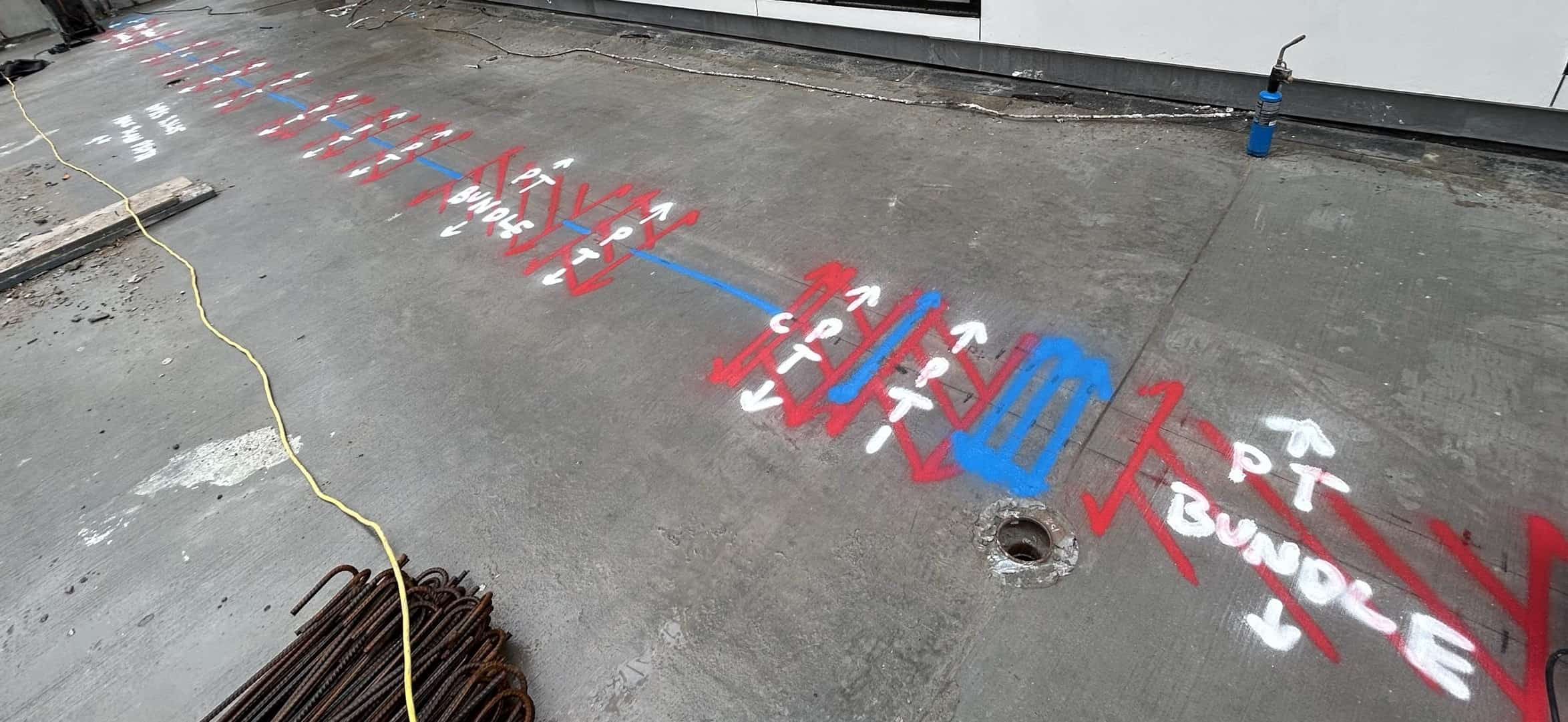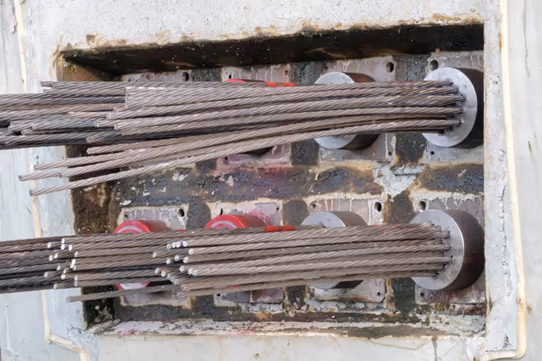GPRS’ industry-leading 99.8% accurate concrete scans helped contractors in California drill with confidence and keep their project moving forward without the risk of delays or injuries.
Shaw & Sons Concrete Contractors were part of the team converting an existing building into an apartment complex in Los Angeles, California. Part of the project included installing walls by anchoring dowels, long, cylindrical steel rods used to bind concrete slabs and secure structures. The contractors knew where they would likely be cutting and coring the concrete, but didn’t know what infrastructure lay beneath it.
A team of GPRS Project Managers was able to arrive on site a full day ahead of schedule to provide our 99.8% accurate concrete imaging services and give Shaw & Sons the peace of mind they needed to pierce the concrete safely.
GPRS empowers our Project Managers to properly assess the scope of work before they begin scanning. For our team to understand the project’s needs, Project Managers and our customers assess the job scope with both pre- and post-job site walks. Doing so also allows our customers to understand the data we’ve provided when the job is complete.
In this case, Project Manager Jason Osuna’s pre-job fact-finding mission included the information that the slabs he would be scanning were post-tensioned.
“Once we know it's post tension, you know to try and identify the pattern of everything,” Osuna explained. “We were quick to see that it was indeed PT, but it did also have everything else, such as conduit and rebar.”

The scanned area totaled approximately 590 feet of concrete. For comparison, that is over 100 feet longer than the length of the Hollywood sign which is 450 feet in length. Osuna was up for the challenge, because post-tensioned concrete slabs generally contain specific, definable characteristics and the SIM process (Subsurface Investigation Methodology) provides a consistent, repeatable procedure to find, image, and mark it all.
“That's probably one of the biggest scans I've done length-wise,” Osuna said. "Usually everything’s simple, but as far as my biggest project, that has been my biggest one.”

With the guiding principles that SIM provides, GPRS Project Managers deliver highly accurate results that lead to lower hit rates. Through experience-based training and multiple technological strategies, they are given proven protocols to follow that consistently provide clients with the information they need.
As the Project Managers collected the data from the scans, it became clear that some of the planned drilling sites were too congested with PT cables for assured clearance, so Osuna and his team discussed alternatives with the concrete contractor.
“Sometimes we have to be the bearer of bad news and tell them this area isn't going to work,” Osuna explained. “That's when we go ahead and propose if they can possibly move the area or move the locations, because of the amount of post tension cables and the amount of damage it can do if struck.”
The cost of replacing a single PT cable is between $20,000 and $30,000. Not only is there a large monetary risk, but each PT cable pulls between 24,000 and 33,000 pounds of pressure, so the physical risks of striking one can’t be underestimated either.
Despite being surprised at the volume of reinforcements within some areas they planned on drilling, the client was appreciative of the accuracy of the data Osuna and his team gathered, and grateful for their ability to get this job done earlier than expected. The initial scanning job took roughly four days, and the team expects to be called back to scan remaining areas that were not accessible at the time.
When speaking with Osuna about this job, he wanted to thank his team, fellow Project Manager Angel Marin and Project Manager Trainees Jesus Ruiz and Daniel Huerta, for their help on this project.
“It was a long and lengthy project, but at the end of the day, with collaboration and teamwork, we were able to get it done.”
Without GPRS’ SIM-certified Project Managers and precise concrete scans, any concrete coring or drilling during this project could put workers’ lives at risk.
What are Post Tension Cables and Why is it Important to Avoid Them When Drilling or Coring Concrete?
Post-tensioning is a technique in which steel cables, also referred to as tendons, are tensioned after the concrete has been cast, which allows for thinner slabs, longer spans, and fewer joints.

Post tensioned concrete is widely used in commercial, residential, and industrial building projects because of its strength and efficiency. The tendons also play a critical role in the structural integrity of the structure, which is why knowing their exact location is so important.
Just because you’re cutting concrete doesn't mean you can cut corners. Whether it’s a simple repair or full renovation, it’s important to locate post tension cables before drilling can begin. Cutting into a post tension concrete slab without the proper preparation can lead to sudden cable recoil, expensive repairs, severe injuries or death, or compromising the structural integrity of the building.
Hiring concrete scanning professionals like GPRS lowers the chances of accidents or injuries, while keeping each project on time and on budget.
GPRS SIM-certified Project Managers are trained to locate and identify post tension cables and other obstructions with our industry-leading 99.8% accurate concrete scans. By combining Ground Penetrating Radar (GPR) and electromagnetic (EM) locating, Project Managers provide clients with a comprehensive understanding of post tension cables and other infrastructures embedded within their concrete slabs. By doing so, clients can drill or core into concrete with confidence knowing there are no surprises waiting for them.
From a single slab to the size of skyscrapers, GPRS helps you Intelligently Visualize The Built World® by showing you what you need to see before cutting or coring concrete.
What can we help you visualize?
